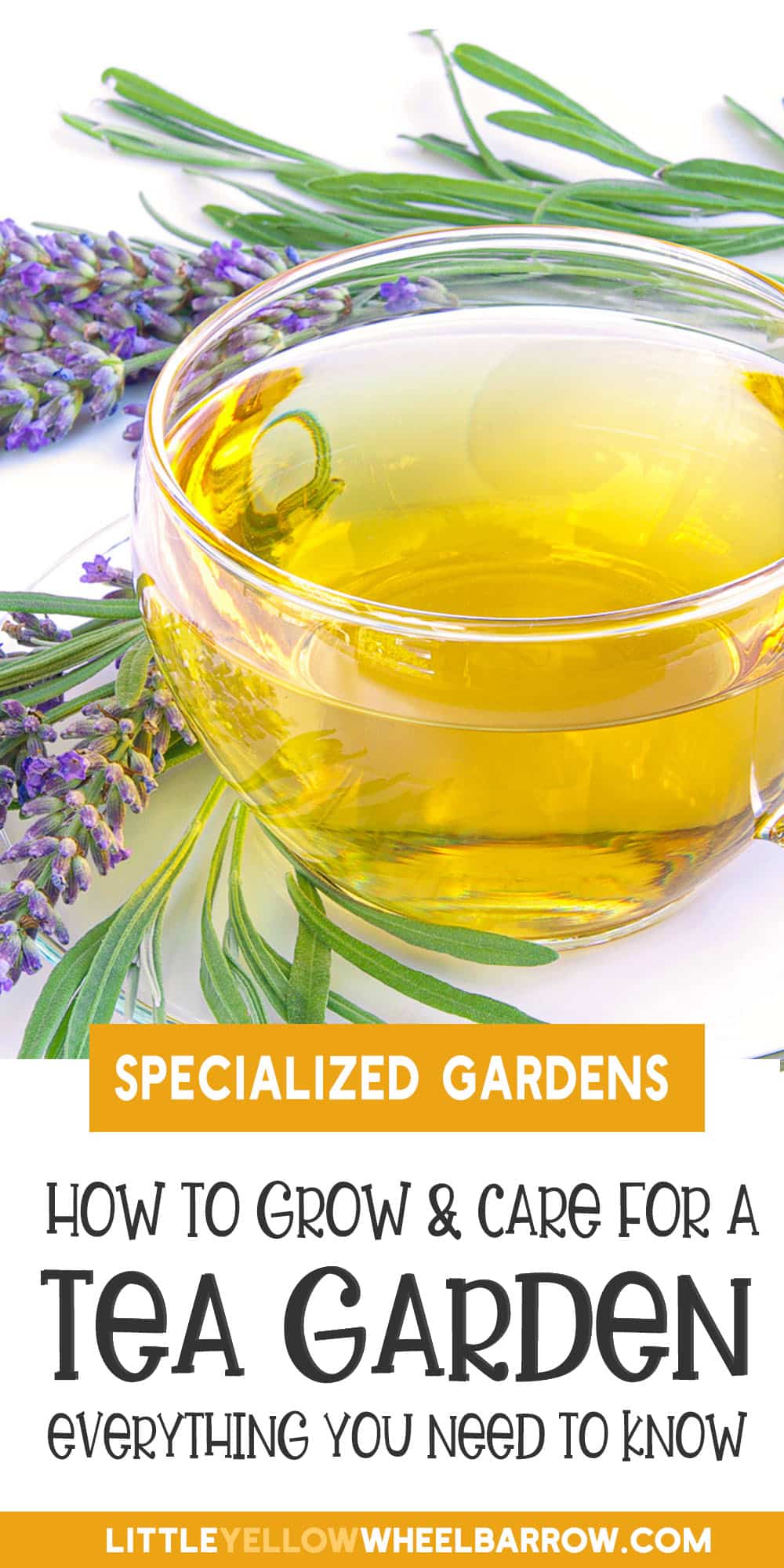Tea Time Anytime: A Guide to Growing An Impressive Tea Garden
Growing a tea garden is a wonderful way to enjoy the beauty and benefits of flowers and herbs while drinking fresh and flavorful herbal teas.
This article will explore the benefits of growing a tea garden and provide tips on planning, planting, and caring for your tea garden and plants. So, if you have ever dreamed of creating your own tea garden, read on!
We also have a few tea freebies for you at the end of the post, so take advantage of them!
You can download these tip sheets for free with no list sign-up. All you have to do is scroll to the bottom of this post – click and download, and they are yours:
- A complete list of tea garden plants (we couldn’t possibly cover them all in this article, but we wanted you to have the complete list)!
- Plus, a cute tea infographic you can print out any size you want.
- And a small tea recipe list with ten different tea combinations to brew for what ails you.

Benefits of Growing a Tea Garden
Growing a tea garden can provide many benefits beyond just the pleasure of growing plants. Here are some of the benefits of growing herbs in a tea garden:
- Fresh, Organic Tea: Growing your own tea garden ensures that the herbs, flowers, and fruits you use for your tea are fresh and organic.
- Cost Savings: Growing your herbal tea garden can save you money in the long run. Herbal teas can be expensive to purchase, but growing your herbs and flowers is a cost-effective way to enjoy a variety of tea blends.
- Health Benefits: Many herbs and flowers commonly grown in tea gardens have health benefits. For example, Chamomile is known to promote relaxation and sleep, while mint can aid in digestion. Drinking herbal tea from these plants can help promote overall health and wellness. Plus, the more herbal tea you drink, the better hydrated you will be.
- Aesthetic Appeal: Tea gardens can be beautiful and add a unique touch to any home. The plants can add color and texture to your yard or patio, and the fragrant flowers and herbs can attract pollinators such as butterflies and bees.
- Stress Relief: Gardening is a known stress reliever, and growing and harvesting your tea garden can be a calming and relaxing experience.

The Steps Required to Plan Your Ultimate Tea Garden
A tea garden is a beautiful and practical addition to any home. A well-planned backyard tea garden can provide a variety of herbs, flowers, and fruits you can grow to make delicious and healthy herbal teas. Here are some tips on how to plan a tea garden.
- Choose the Right Location: Choose a location that receives full sunlight for at least six hours daily. The area should also have good drainage and wind protection.
- Decide on the Plants: Choose plants that are easy to grow and thrive in your climate. Some common tea garden plants include mint, Chamomile, lavender, lemon balm, roses, and lemon thyme.
- Plan the Layout: Plan the layout of your tea garden based on the plants you have chosen. Group plants with similar water and sunlight requirements together. Use companion planting techniques to promote healthy growth and prevent pest problems. Be sure to take into consideration the height of the plants when fully grown when you are planning placements.
- Consider the Aesthetics: A tea garden should be functional and beautiful. Consider adding garden features such as benches, trellises, or bird baths to add interest and attract pollinators.
- Maintenance: Consider the maintenance needs of your plants when planning your tea garden. Some plants may need regular pruning or deadheading to promote healthy growth and blooming.
- Harvesting: Plan for harvesting your tea garden plants. Determine the best time to harvest and how to dry or store the herbs and flowers once dried.
Following these tips, you can plan a beautiful and productive tea garden to provide your family with delicious and healthy herbal infusions for years.
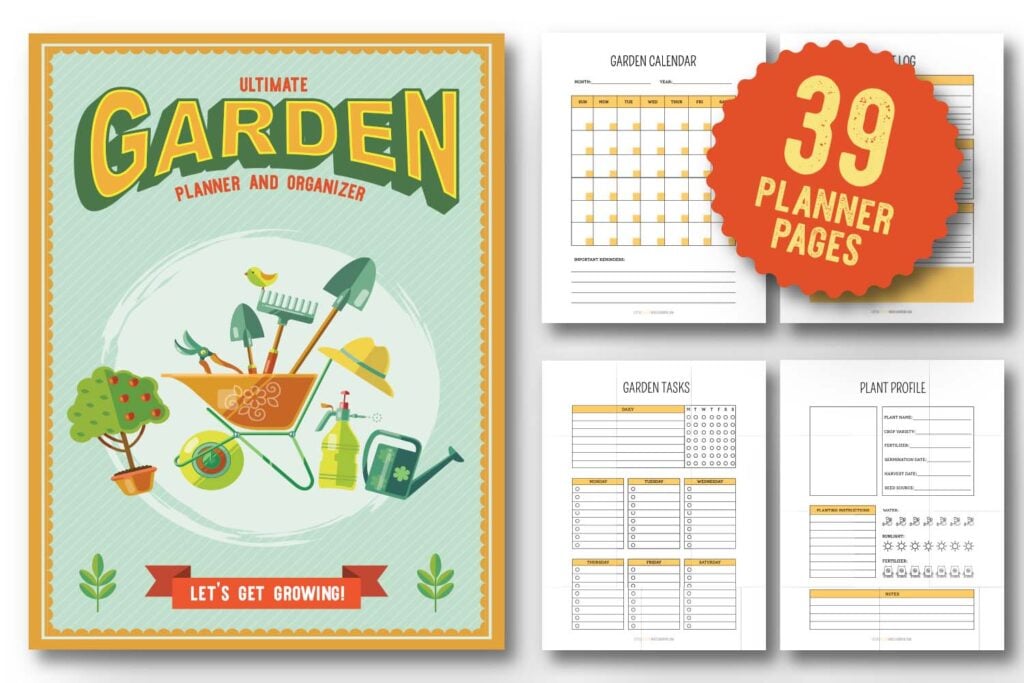
Must-Have Plants for Your Tea Garden
There are so many wonderful fresh herbs and flowers that you can grow right in your own backyard that can make a great cup of tea:
Tea Plant
Actual tea plants are not a requirement for your herbal tea garden, but they are a nice addition to help create unique and personal blends.
The Camellia sinensis plant is the most commonly grown variety in North America. But, unfortunately, to grow Camellia Sinensis, you need to be in USDA zone 8 or warmer.
You can grow tea plants in a greenhouse with extra care and attention. We’ve never tried, but there are stories of a few brave Canadians growing tea plants in their year-round greenhouses.
There is one more drawback to growing tea plants – It could be years (3-5) before you can harvest from your plants.

Benefits of Tea Plants
Tea has antioxidant properties that can help protect the body against free radicals, which can cause cellular damage and increase the risk of chronic diseases.
Tea also has anti-inflammatory properties that can help reduce inflammation and promote overall health.
Mint Family
Mint requires moist soil and partial shade—plant mint in the spring or fall, and space each plant about two feet apart. Mint is a hardy herb that can tolerate different soil conditions and climates. However, mint is a low-maintenance plant that can quickly take over a garden, so keep it contained.
Mint grows well with other tea herbs and flowers, such as Chamomile, lemon balm, lavender, and rosemary.
Learn More: We have several articles on the mint plant, check them out!
- How to Grow Mint from Cuttings or Seeds
- Types of Mint Plants: Guide to Popular Mint Varieties
- The Best Mint Companion Plants
- How to Properly Harvest Mint

Benefits of Mint Tea
Teas made with apple mint, spearmint, chocolate mint, pineapple mint, and peppermint have many potential health benefits, including:
- Digestive health: Mint teas have soothing properties that can help alleviate digestive issues such as indigestion, bloating, and gas. The menthol in mint teas can help stimulate the production of digestive enzymes, which will help improve digestion.
- Respiratory health: Mint teas also have decongestant properties that can help clear the sinuses and airways.
- Stress relief: The aroma and flavor of mint teas can calm the mind and body. Drinking mint tea may help reduce stress, anxiety, and tension, promoting relaxation and calm.
- Oral health: Mint teas also have antibacterial properties that can help promote oral health.
Echinacea (coneflowers)
If you want to add coneflowers to your tea garden, plant them in well-drained soil and a sunny spot in the spring. Coneflowers will not grow well if their feet remain wet. You will also need to plant them at least two feet apart to prevent diseases caused by humidity.
Plant your coneflowers in the back of your tea garden near plants like mint, Chamomile, lemon balm, and thyme that share similar environmental needs.
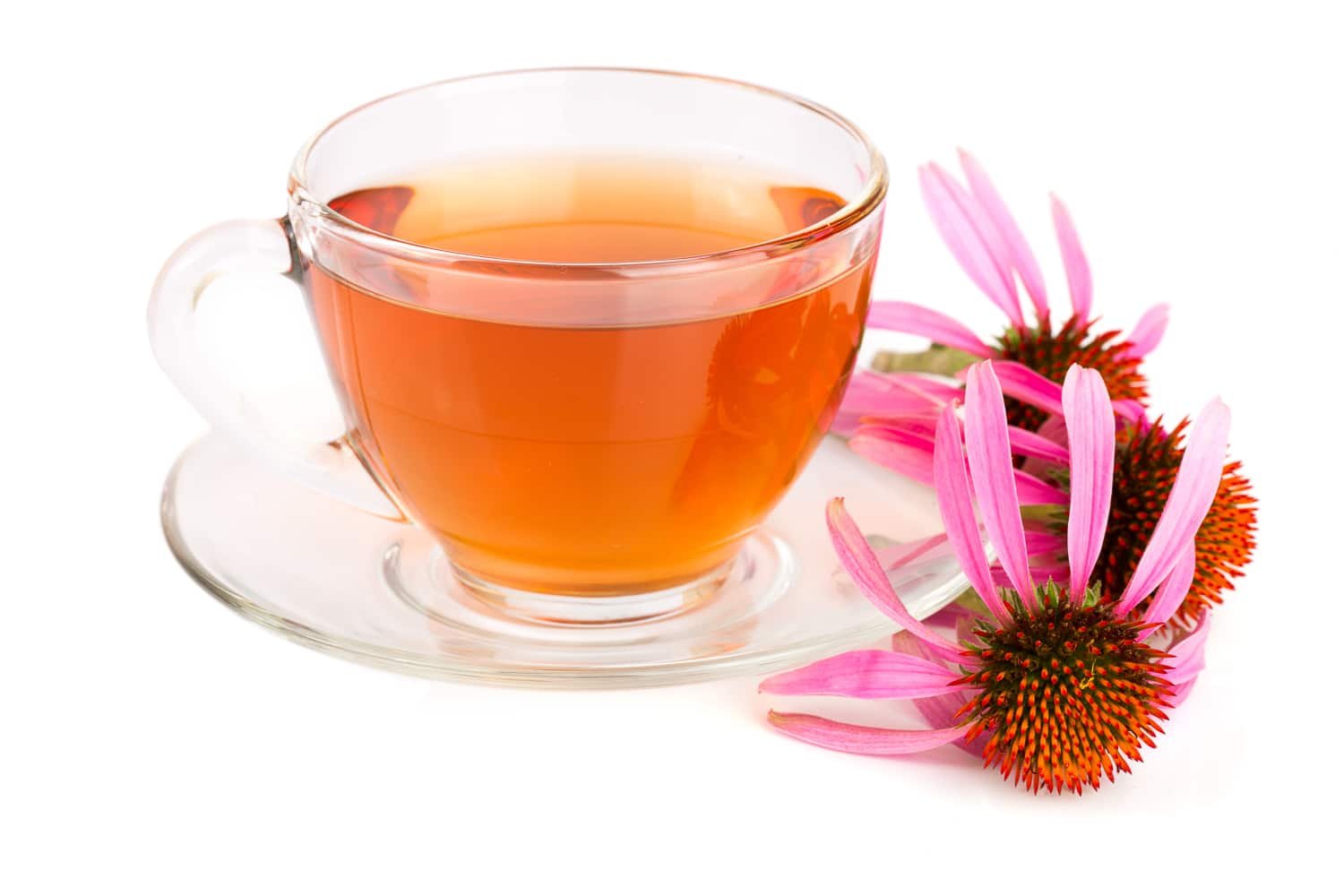
Benefits of Coneflower Tea
Coneflower tea is popular for easing cold and flu symptoms and reducing fever and pain. It’s also believed to have immune-boosting and anti-inflammatory properties that may help soothe skin conditions such as eczema and psoriasis.
Lemon Balm
Lemon balm is one of the plants on our list that grows well in partial shade, so they will do well in a shaded part of the tea garden. However, the lemon balm does require well-draining soil to prevent the roots from rotting, so be sure your planting area is free draining.
You can plant and grow lemon balm in the spring or fall but be sure to leave at least 2-3 feet between plants to give them room to grow. Crowding of plants is a surefire way to invite diseases, cause stress to the plants, and invite insect pests to the garden.
Additionally, you will want to place the plants at the back of the garden beds or at north of the bed to prevent creating excess shade in your tea garden.
Lemon balm will grow well almost anywhere but does best with herbs like mint, Chamomile, lavender, and rosemary.

Benefits of Lemon Balm Tea
Lemon balm tea is excellent for relaxation and can help with stress, anxiety, and sleep issues. The tea can also help reduce bloating and indigestion.
Lavender
Lavender is exceptionally drought tolerant and can go a long while without moisture. But provide too much water, and your lavender plants will suffer. The plants require very well-draining soil, so amend with sand before planting. You will want to give lavender a sunny spot in your tea garden, as shade will reduce flower production.
Lavender will thrive if planted near Mediterranean herbs like thyme, rosemary, or sage. These plants share similar watering needs, full sun, requirements, and nutrients but only partially compete for them.
Learn More: Check out these related articles on lavender:
- How to Grow Lavender in Pots Successfully
- The Best Lavender Companion Plants for Your Garden
- How to Dry Lavender
- What to Do with Dried Lavender

Benefits of Lavender Tea
Lavender tea is soothing and relaxing and can help with anxiety and stress.
Its calming effects can help reduce tension and can relieve insomnia.
And lastly, lavender tea is filled with antioxidant and anti-inflammatory properties that can help reduce painful inflammation. Lavender is also an aid in digestion and may help with bloating and gas.
Chamomile
Like most plants, Chamomile requires well-drained soil and full sun. However, Chamomile is quite hardy and can tolerate a light frost, so it is one of the plants on our list that will bloom until the first hard frost.
You can confidently plant Chamomile with lavender, mint, lemon balm, and thyme. Since chamomile plants can grow quite tall, place the plants toward the back of your tea garden to prevent creating shade for the other plants.

Benefits of Chamomile Tea
Chamomile tea is a soothing and relaxing herbal tea used for centuries to aid sleep and reduce anxiety. The tea is believed to have a calming effect on the body and can help reduce stress and tension.
Chamomile tea also has anti-inflammatory properties that can help reduce inflammation and promote overall health. Additionally, it is believed to aid in digestion and may help alleviate digestive issues such as bloating and gas.
Roman Chamomile or German Chamomile?
Roman Chamomile has a sweet, apple-like aroma when used in herbal teas and can have digestive and sleep-promoting benefits.
German Chamomile has a strong, earthy aroma in herbal teas and is a natural remedy for digestive issues, inflammation, and anxiety.
Important to note: All chamomiles are daisies, but not all are edible, and some are toxic. I realize that sounds like a logic problem, but the point is all chamomiles are OK to ingest, but not all daises are, and you need to know the difference before you brew.
- Learn More: Check out our complete guide to growing chamomile for tea!
Rosemary
Rosemary can be a finicky perennial herb to grow outside. Plant in the shade and the plant will struggle with stunted growth. Give the plants a little too much water, and they will struggle. This herbaceous perennial only grows well if all required conditions are met. Make sure you plant rosemary in good soil with exceptional drainage.
You can plant rosemary in spring or fall, but give each plant at least 24 inches of spacing to give it the space it needs to grow.
You must be careful about where you plant your rosemary with other plants. Avoid planting near herbs that require lots of moisture, like basil. Thyme, sage, lemon verbena, and lavender are all beautiful choices to place near or around rosemary.
Read More: Check out our guide to growing, caring for, and harvesting rosemary.

Benefits of Rosemary Tea
Rosemary has an earthy, woody, and slightly bitter taste with a subtle hint of mint, and when brewed in tea, it has a distinct smell of pine. As they say, this may not be your cup of tea (see what I did there?), but it has some unique benefits. More research is required, but based on anecdotal evidence, rosemary may help with the following ailments:
- Improved digestion: Rosemary tea may help aid digestion and relieve digestive problems like bloating, gas, and constipation.
- Boosted immune system: Rosemary tea is a good source of antioxidants, which can help boost the immune system and protect against free radical damage.
- Reduced inflammation: The anti-inflammatory compounds in rosemary tea may help reduce inflammation.
- Improved brain function: Some research suggests that the antioxidants in rosemary tea may help improve cognitive function and memory.
- Improved circulation: Rosemary tea may help improve circulation and lower blood pressure, benefiting cardiovascular health.
Lemon Thyme
Lemon thyme is a lovely perennial herb to add to your tea garden. One of the many great things about lemon thyme is that it is a hardy herb that can tolerate drought conditions and even rocky soil. But be careful where you plant thyme because too much water or consistent moisture can cause the roots to rot.
For best performance, plant thyme in full sun; if planted in the shade, thyme will grow very slowly.
You will want to plant thyme with other drought-tolerant herbs and flowers, such as lavender, rosemary, lemon verbena, and sage.
Read More: For a bountiful harvest, check out this full guide to growing thyme.
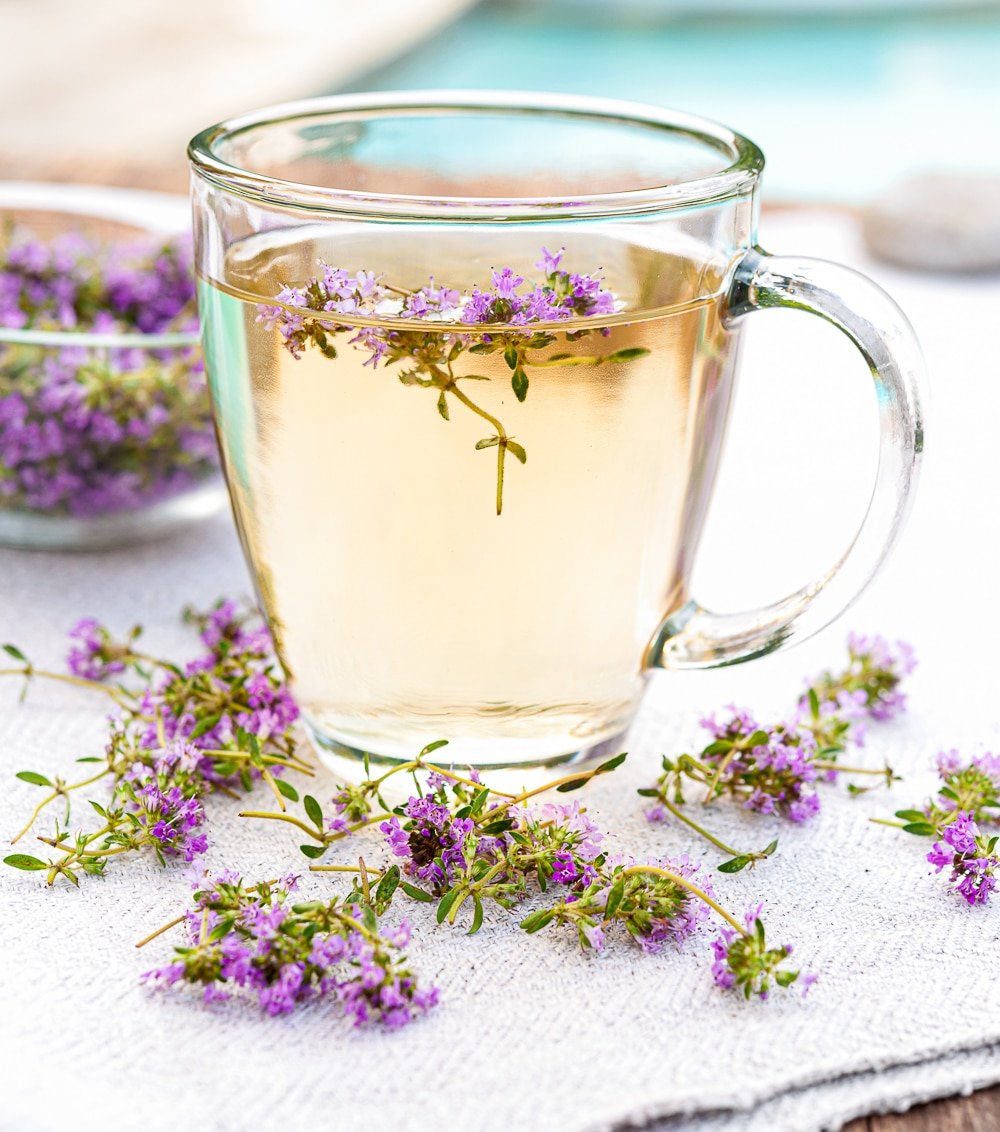
Benefits of Lemon Thyme Tea
Thyme tea is rich in antioxidants and anti-inflammatory chemicals that can help reduce inflammation. A cup of thyme tea can also help settle a stomach and alleviate issues like gas and bloating.
Roses
Growing beautiful roses is easy and rewarding with the proper care and attention.
You will want to pick a sunny spot with well-draining soil and good air circulation. Roses are prone to diseases like powdery mildew and downy mildew, usually caused by overcrowding and high humidity. Spacing the plants with adequate space will provide good air circulation and help prevent diseases.
Keep your roses consistently moist but not waterlogged and keep a sharp eye out for pest pressure and try to manage any infestations as soon as possible.
Roses grow well with other tea garden plants, such as mint, Chamomile, and hibiscus.
My favorite teas always feature roses; the scent and taste are relaxing! Rose petals, with something citrus like grapefruit, and a bit of vanilla, make a wonderful afternoon tea break.
Learn More: Check out these related articles:

Benefits of Rose Tea
Rose tea contains anti-inflammatory and antibacterial properties that can help reduce inflammation. The tea is also reputed to help ease stomach issues like constipation and bloating.
This tea can also help promotes skin health: The vitamins and minerals in rose tea can help promote healthy skin, reduce the appearance of wrinkles, and improve overall skin tone and texture.
And lastly, a cup of rose tea can relax you before bed and help promote healthy sleep.

Caring for A Tea Garden
Tea garden plants need to be cared for properly to ensure healthy growth. Here are some general tips for caring for tea garden plants:
Water: Tea garden plants need regular watering, especially during the hot summer. Water early in the morning or late in the evening to avoid evaporation and allow the plants to absorb the water before the day’s heat. Even plants that are drought tolerant will produce better if kept adequately watered.
Soil: Most tea garden plants require well-draining soil. To improve the soil, add organic matter such as compost or mulch.
Fertilizer: Tea garden plants do not require heavy fertilization but benefit from periodic feeding. Use a balanced fertilizer once every four to six weeks during the growing season.

Harvesting From Your Tea Gardens:
You should know the proper timing and techniques to harvest plants from your tea or garden. Here are some general tips for harvesting:
Timing: The best time to harvest tea garden plants is in the morning after the dew has dried but before the sun is too hot.
Technique: Use sharp scissors or garden shears to harvest the plants. Cut the stems just above a set of leaves to promote healthy growth.
Quantity: Only harvest 1/3 of the plant at a time and only from well-established plants.
Drying Tea Garden Plants:
Drying tea leaves from your garden plants is easy! Here are some general tips for drying tea garden plants:
Drying Methods: Air drying is the most common tea drying method. You will want to bundle and hang your plants’ upside down in a dark room with good ventilation for 2-4 weeks. You can also use a dehydrator or low-temperature oven.
Dried Tea Storage: Once the plants are fully air dry, store them in a cool, dry place in an airtight container. Avoid storing the plants in direct sunlight or a damp area.
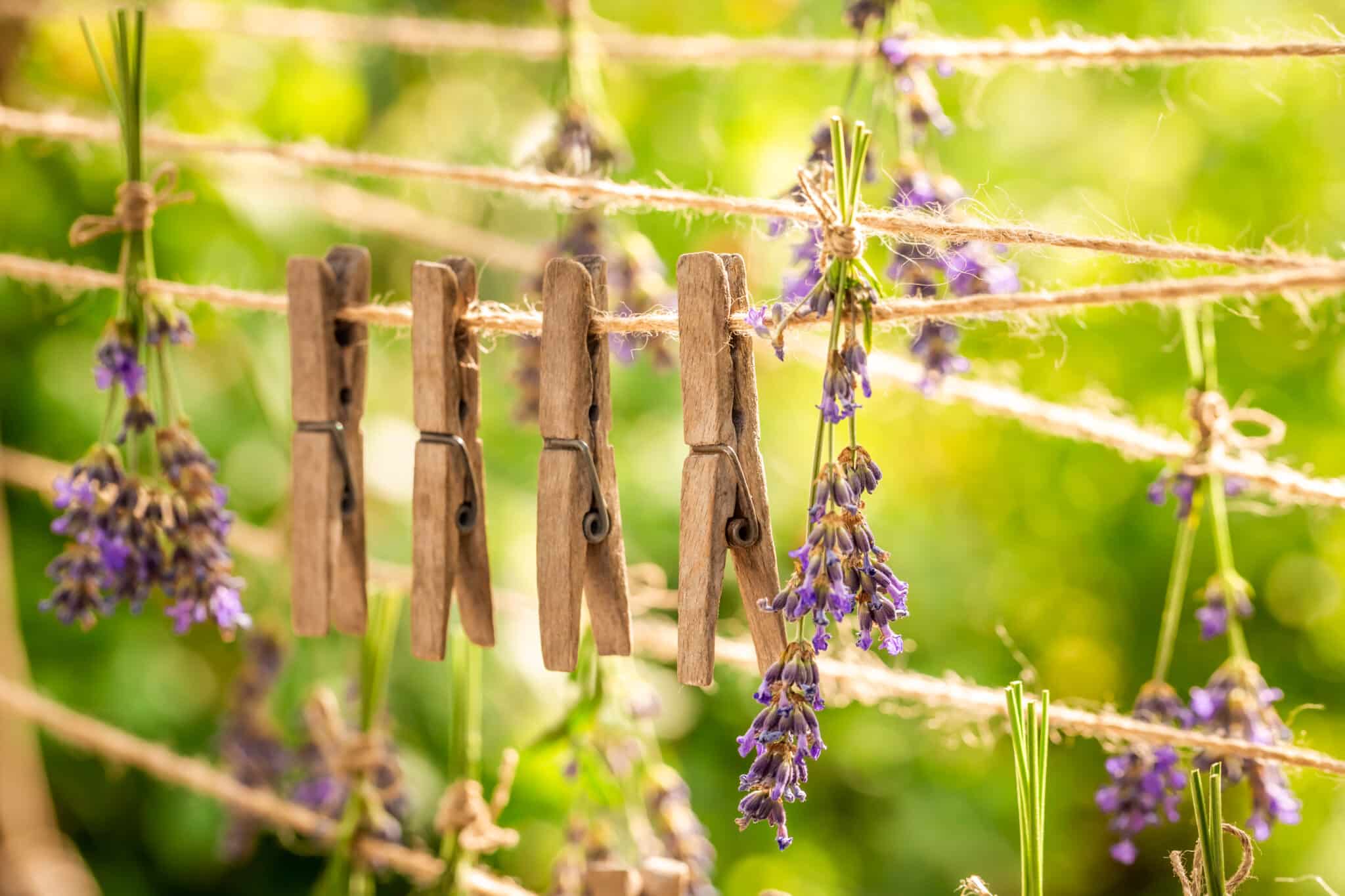
Grow Your Own Herbal Tea Garden
There you have it! I hope you’re excited to get started on your own tea gardening adventure. Growing your own teas is rewarding and relaxing, whether you live a fast-paced life or are enjoying retirement.
To get your free infographic and tea recipe booklet, click on this link to our freebie page.
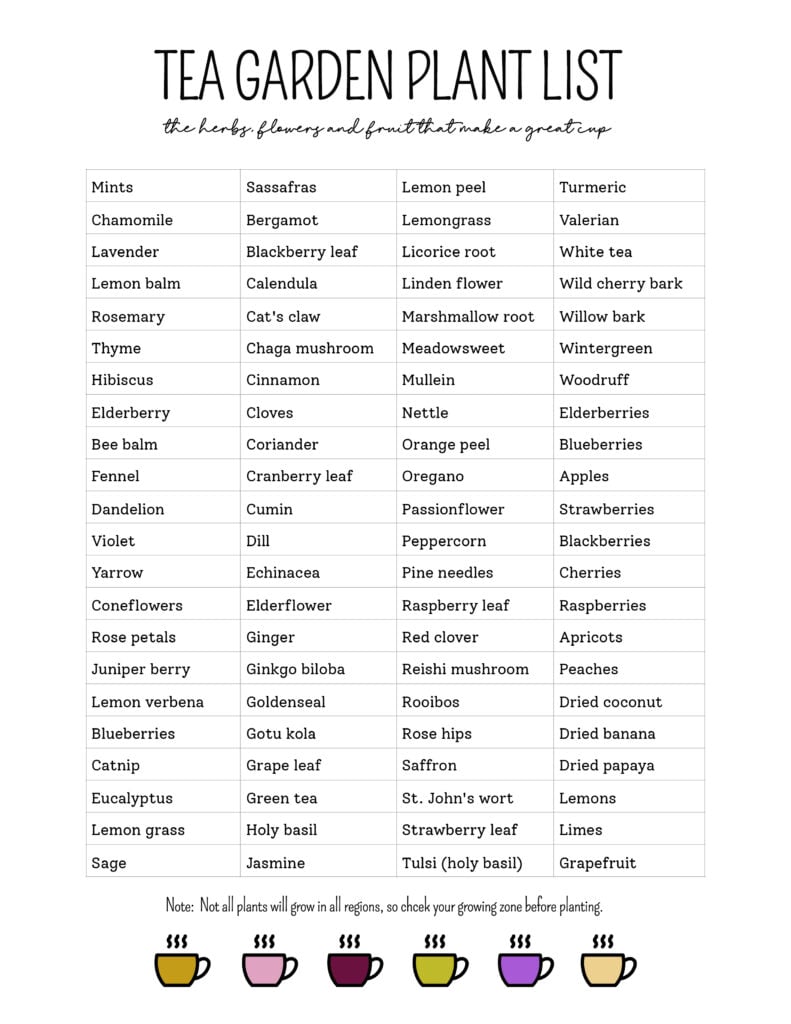


We have all kinds of articles to help you with your own garden project:
- How Weeds Grow: The Ultimate Care and Prevention Guide
- Bringing Life to Your Garden with Easy To Grow Biennials
- 27 Full Sun Perennials For Sun-Drenched Gardens
- Which Herbs are Perennials: 12 Herbs that Keep Coming Back!
- How To Make Potpourri Using Dry Flowers And Herbs
- Drought Tolerant Plants for Hot, Dry Summers
- How to Dry Flowers – We Tested 5 Different Methods to Find the Best!





